Advice for (and memories from) an unforgettable trip in the Land of the Rising Sun. If you are looking for plenty of tips for your study holiday in Kyōto, this is the right article for you!
One fall morning many young years ago I strolled through the rose-colored streets of Kyōto. The streets owed their rose color partly to the perennial oscillations of the lanterns faintly swinging silently above, but also to the Japanese maples which had begun to timidly welcome the autumn.
I recognized with surprise the scent of the historic Officina Profumo Farmaceutica Santa Maria Novella in the November air. This sudden olfactory journey from the land of the rising sun to Florence perplexed me, but when, turning, I spotted a small store with a sign glaringly written in Italian, I was even more stunned. Then I learned that Kyōto and Florence had long nurtured a close bond, and that this connection had also led to a shared passion for perfume.
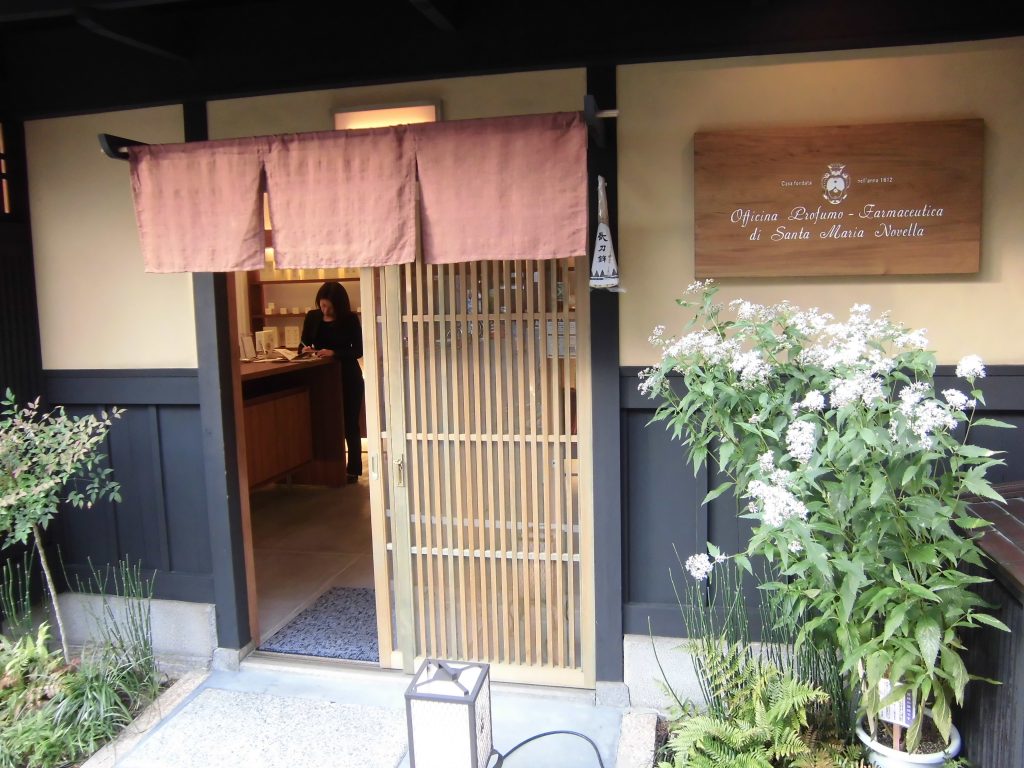
The sister city agreement between Florence and Kyōto
On 6 November 1965, the sister city agreement between the city of Florence and Kyōto was sanctioned by the former mayor of Florence Lelio Lagorio and by the mayor of Kyōto Soichi Nogami, professor of Italian and Italian literature and respected Danteist. The agreement had been promoted by Giorgio la Pira and was renewed for another 50 years in 2015 by the mayor of Florence Dario Nardella and the mayor of Kyōto Daisaku Kadokawa in Palazzo Vecchio’s Salone dei Cinquecento. On that occasion, Dario Nardella declared that, “the two cities represent the historic and cultural bridge between Japan and Italy.”
In fact, Florence boasts the distinction of being Japanese tourists’ most loved Italian city and in turn, Kyōto is the city in Japan most loved by the Florentines. The Japanese are also the fourth most common foreign visitors to Florence. Like Florence, Kyōto is romantically situated in a valley, surrounded by green hills: when I gazed up at its sky (which, as usual, was a little cloudy), on the last day of my trip, I noticed that the clouds above the grey roofs and black temples weren’t so different than those above Florence. I wrapped my arms around myself more tightly in the autumn wind and shed a tear (actually, more than one). As I hurried down from my terrace, I promised myself that I would return to Japan.
Not only did I go back to Japan, but in the meantime, I moved to Florence. In the autumns that followed, I cultivated a love for Japanese and Florentine art, for the Renaissance and for the geisha, for the Medici and for the samurai, and, almost without realizing it, I became a Florence tour guide.
Learning a Foreign Language Abroad: A Dream I’d Always Had
During my studies, the University of Padua’s curriculum in “Cultural Tourism Design and Management” allowed me to embrace many fields in art, archeology, museology, and foreign languages. The last of these have always been of particular interest to me. And so, in October, I departed unknowingly for Kyōto, with all of the reckless exuberance of youth. I organized my trip a month in advance and studied the two “easiest” scripts in the last two weeks before my departure between tours, while working as a tour assistant. I timidly made friends with hiragana and katakana, blasted “Un bel dì vedremo” in my headphones and, drunk on romanticism, departed for the Land of the Rising Sun. I couldn’t have imagined that, some winters later, I would work as a guide for the splendid exhibition “The Japanese Renaissance,” at the Uffizi from 3 October 2017 to 7 January 2018 in Florence.
This gave me the chance to show off what Japanese I remembered from years before and to deepen my understanding of the pictorial art of the byobu, the splendid decorative screens on loan for the first time outside Japan from Tokyo, Kyōto, and other cities to commemorate 150 years of relations between Italy and the Land of the Rising Sun.
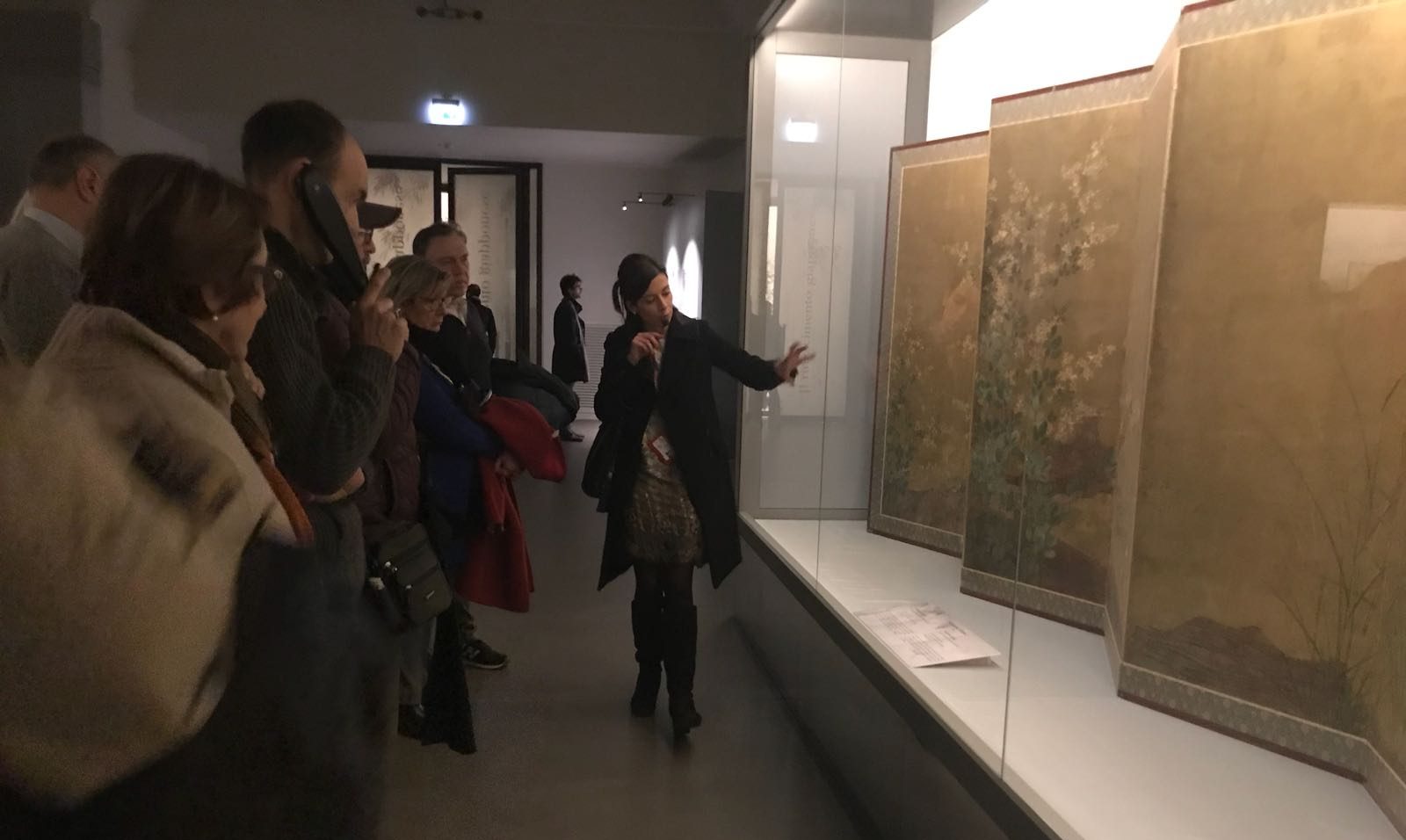
How to organize a study-holiday in Kyōto
Travelling with an organization such as a school gives a sense of security to young people. The school usually provides lodging: you can choose to stay with a family, in close contact with the locals and their daily habits, or you can opt for a more independent solution, like a studio that would permit you to live alone or an apartment shared with other wayward students who offer the chance for friendship, trips, and parties. Guess which of these options I chose…
Nope, wrong! I’ll never forget my private studio with curtains as yellow as the sacred sun of the goddess Amaterasu. I would go down five flights of stairs, cross the street and…wow, I was already at school. So, to fit in with my new environment, I would sleep blissfully until five minutes before class and, like Bunny awakened suddenly by Luna the cat, yell with surprise when I realized how late I was and scream like a mad woman as I ran a few meters from my Japanese-style studio. I would arrive late to class with a face covered in embarrassing droplets of sweat, like the ones in a cartoon from the ‘90s. The professor, polite, composed, and impeccable, wouldn’t even attempt to lecture me, but I felt like a typical rude westerner – one still wearing the marks of crumpled sheets on my face. After class, everyone ate ramen outside the school, usually in the company of other students; in the early afternoon, after having diligently done my homework, I would get on my bike and lazily peddle around the city.
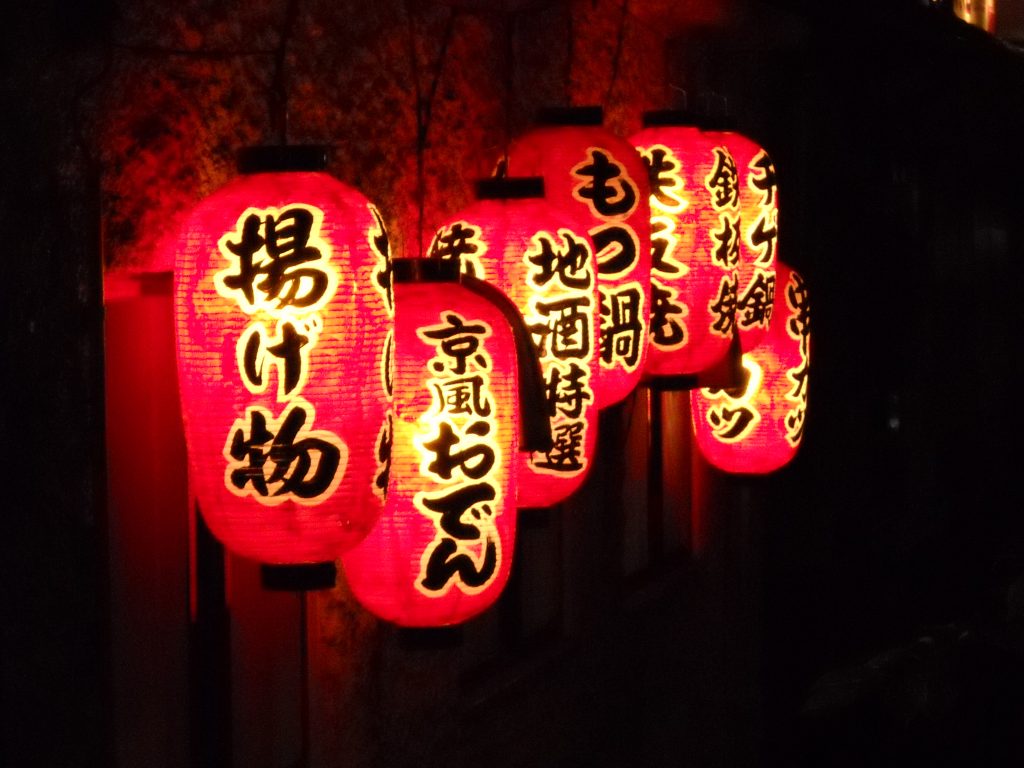
What Not to Miss in Kyōto
Kyōto was the second capital of Japan after Nara, from 794 to 1868: if you’re seeking the peace of zen gardens or the triumph of the refined imperial court of the Heian period, well, you’re in the right place. 365 days wouldn’t be enough to visit all the temples and gardens in the city, most of which are located in the hills surrounding beautiful Kyōto. The river crosses the city from the north to the south: it’s almost as large as the Arno and the Japanese students, like the Florentines, would hang out near the river on fresh summer evenings. I left my heart in one of Kyōto’s most famous temples: I lived some of the happiest moments of my life in its kilometer-long corridor of vermillion torii. I’m talking of course about Fushimi Inari. One of the scenes from the film Memoirs of a Geisha (but don’t mention this film to the Japanese, they hate it) is set in Senbon Torii, the gallery of a thousand orange poles fixed in the ground, that welcomes pilgrims and invites them to wind along the path through the forest’s green belly, climbing until they reach the mountain’s peak. You’ll be accompanied by foxes, who will keep a close watch over you. They are the sacred messengers of the rice goddess Inari, bringer of abundance but also death.
The Japanese must have really loved these evocative corridors: you’ll find another famous one in Arashiyama, around a half-hour from Kyōto (if you pedal fast and live north-west from the center). I’m referring to the bamboo forest: a humid, shadowy, cool, and spiritual path that winds through the peace of nature. One bit of advice: to enjoy it like I did, forget about summer or spring. Instead, come in the fall. There are fewer tourists: I had the privilege of walking it alone.
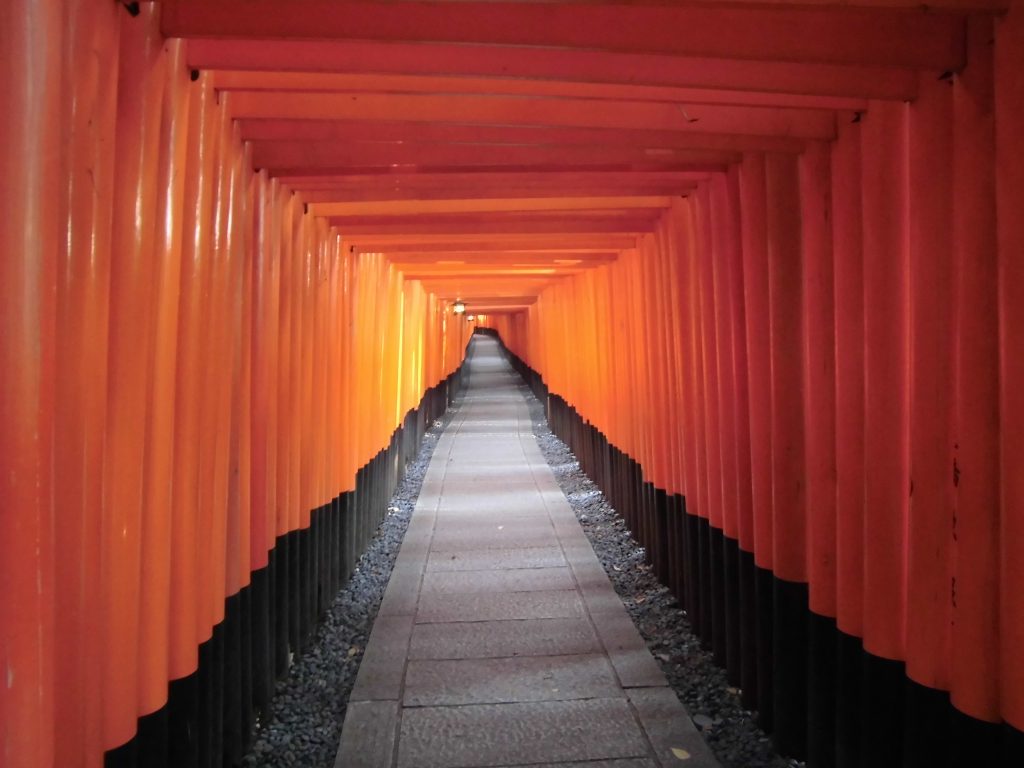
Visiting Kyōto in Springtime
If, instead, you can’t resist the call of the cherry blossoms, well…how could I blame you? I personally had to return to my beloved Kyōto between March and April. I discovered the Japanese frenzy for finding the best photo, the most beautiful sakura, the whitest plum blossom…the cold rain that fell on the flowers highlighted the intoxicating smell of honey. Along the river, but especially in the parks, I felt my heart skip a beat. I had the emotional experience of contemplating the cherry blossoms and the fragility of nature, that which we westerners call vanitas or momento mori, but that the Japanese translate as hanami and which is filled with what the Japanese define as the mono no aware, the feeling that arises when we are so captivated by beauty that we become melancholic, because we know that it will disappear. I don’t know why, but the sad smile of Botticelli’s Venus came to mind.
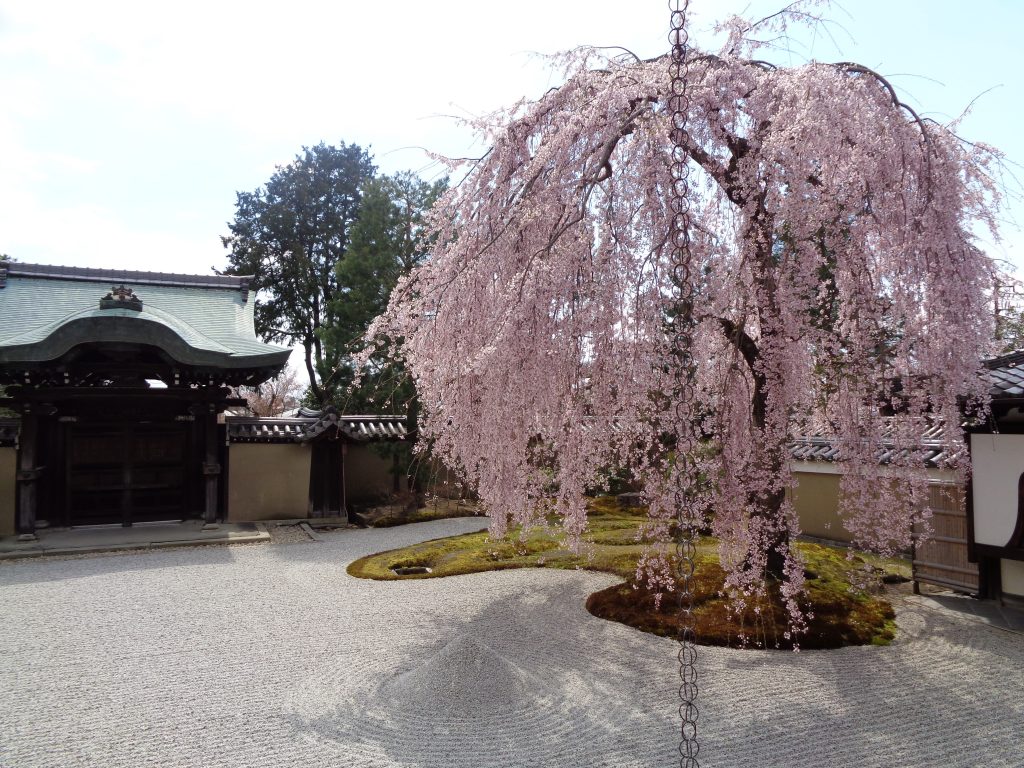
My experience for your study-holiday in Kyōto
As beautiful as they are, vacations unfortunately don’t have the power of a longer stay abroad. The impact of studying abroad is much greater than a quick trip. To get a good sense of a culture, a language, a civilization, you need the most precious thing: time. Only by losing ourselves in the labyrinth of a people, in their traditions, in the charm of their streets, in their markets, their food, their lights, only by getting to know people, by making friends under the pergola of the starry sky, by listening to chats between friends floating in the wind, along the river, in the fall or in spring, can we really say that we’ve been somewhere.
Longing for living? Are you already checking the calendar, but are you still hesitating? In case of any doubt, please contact me! I will be glad at your disposal for further information for your study-holiday experience in Kyōto.
For information on a study trip to Kyōto, you can write to:
HELPFUL LINKS:
http://www.smnovella.com/page/company
https://www.comune.fi.it/pagina/firenze-internazionale/gemellaggi-e-patti-di-amicizia
https://www.uffizi.it/eventi/il-rinascimento-giapponese


